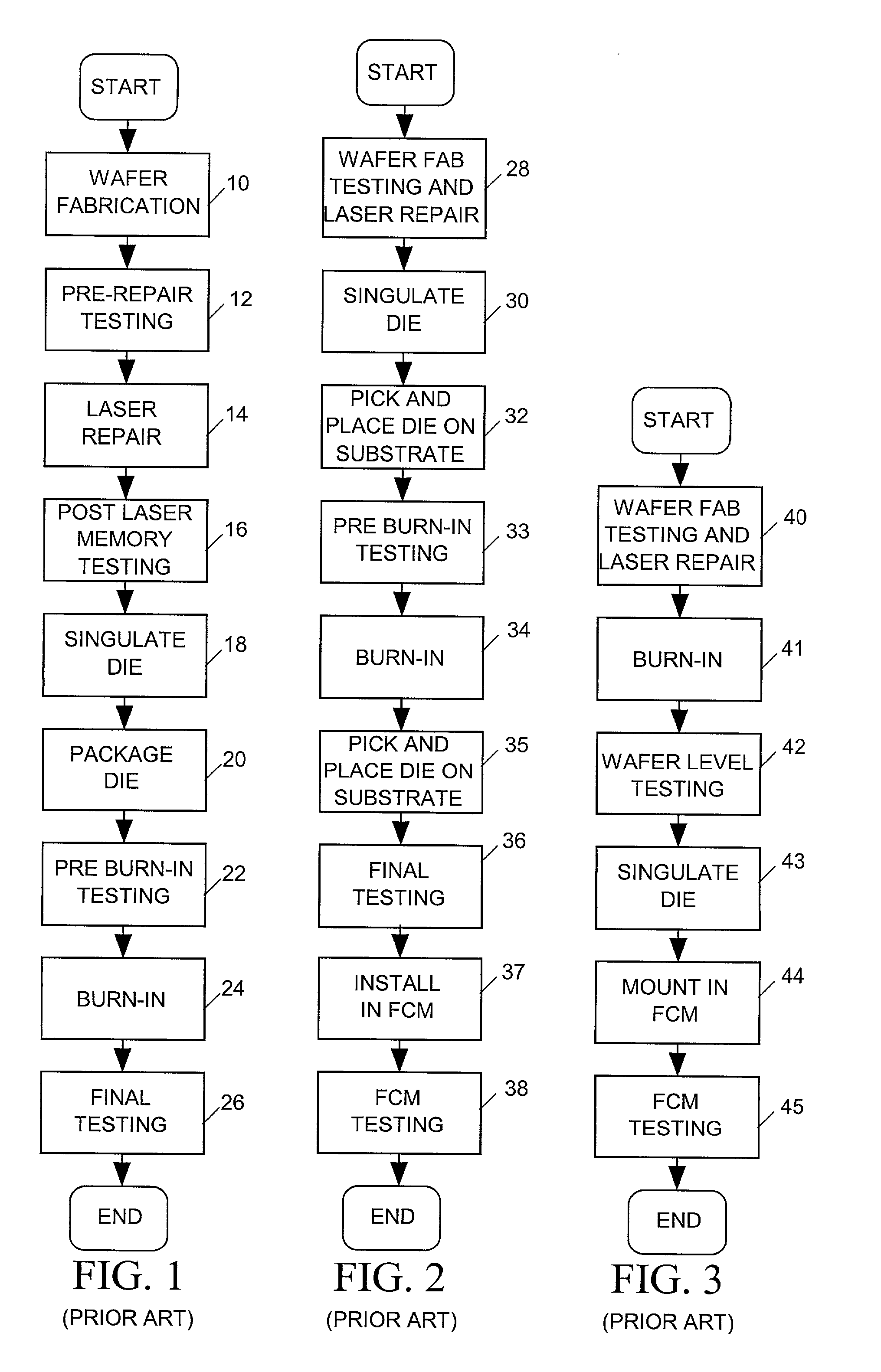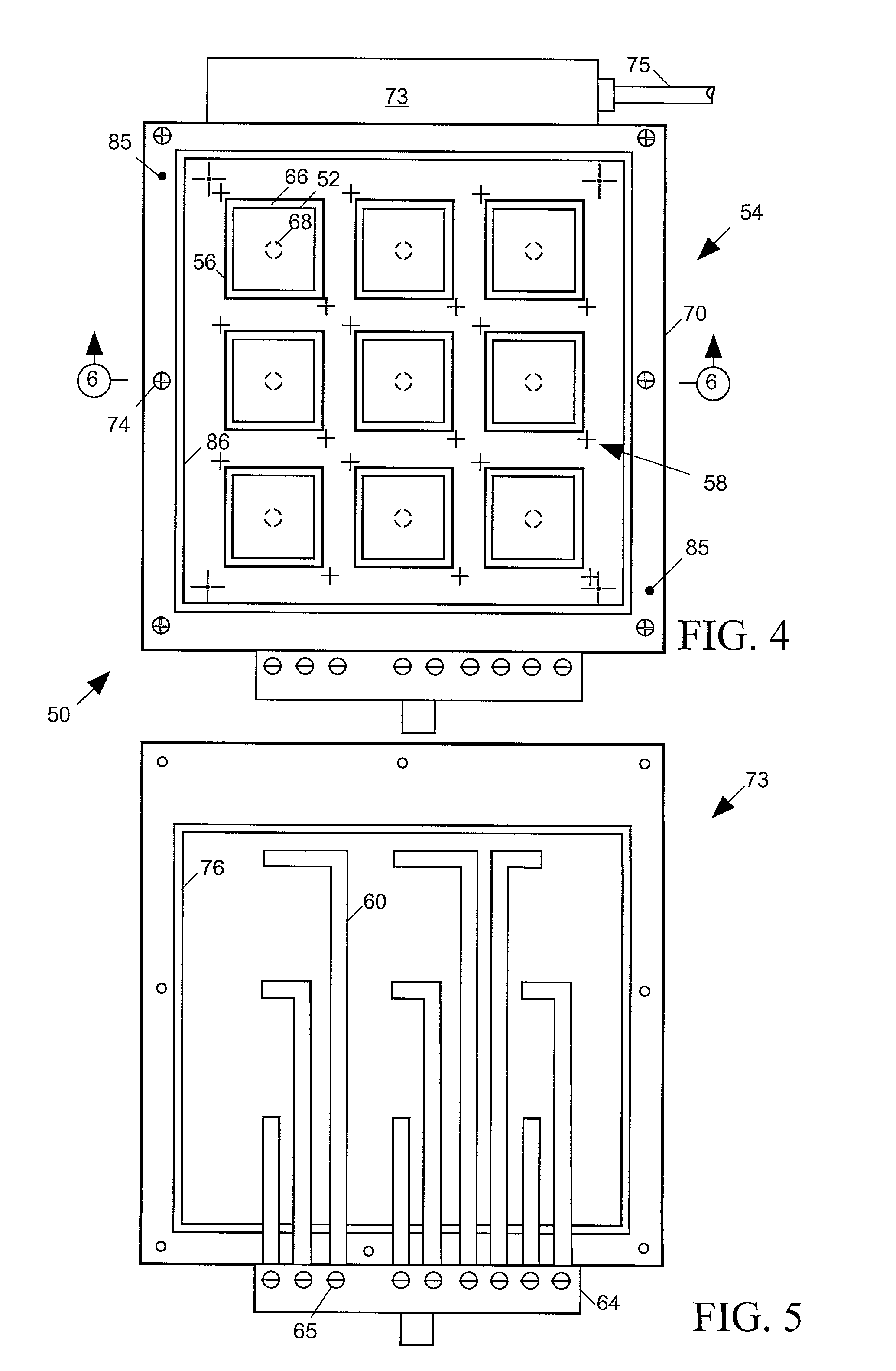Test method for yielding a known good die
a test method and die technology, applied in the direction of individual semiconductor device testing, semiconductor/solid-state device testing/measurement, instruments, etc., can solve the problems of increasing the cost of testing at the wafer level, wasting burn-in resources on dice, and packaging more defective di
- Summary
- Abstract
- Description
- Claims
- Application Information
AI Technical Summary
Problems solved by technology
Method used
Image
Examples
Embodiment Construction
[0038] The present invention relates to a system for testing and processing an array of singulated integrated circuit (IC) dice held on a carrier, and this specification describes one or more exemplary embodiments and applications of the invention considered by the applicants to be the best modes of practicing the invention. It is not intended, however, that the invention be limited to the exemplary embodiments described below or to the manner in which the embodiments operate.
[0039] FIG. 4 is a top plan view of a silicon panel carrier 50 in accordance with an exemplary embodiment of the invention, and FIGS. 5 and 6 are sectional plan and elevation views, respectively, of the carrier of FIG. 4. Carrier 50 includes a base 54 having a 3.times.3 array of recesses 56, each having an upper opening and a planar bottom for holding a separate one of IC dice 52. While for simplicity, carrier 50 of FIGS. 4-6 is illustrated as having a 3.times.3 array of recesses 56, in other embodiments of the...
PUM
 Login to View More
Login to View More Abstract
Description
Claims
Application Information
 Login to View More
Login to View More - R&D
- Intellectual Property
- Life Sciences
- Materials
- Tech Scout
- Unparalleled Data Quality
- Higher Quality Content
- 60% Fewer Hallucinations
Browse by: Latest US Patents, China's latest patents, Technical Efficacy Thesaurus, Application Domain, Technology Topic, Popular Technical Reports.
© 2025 PatSnap. All rights reserved.Legal|Privacy policy|Modern Slavery Act Transparency Statement|Sitemap|About US| Contact US: help@patsnap.com



